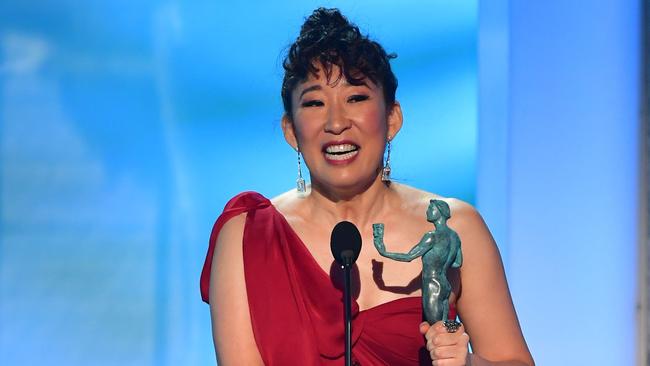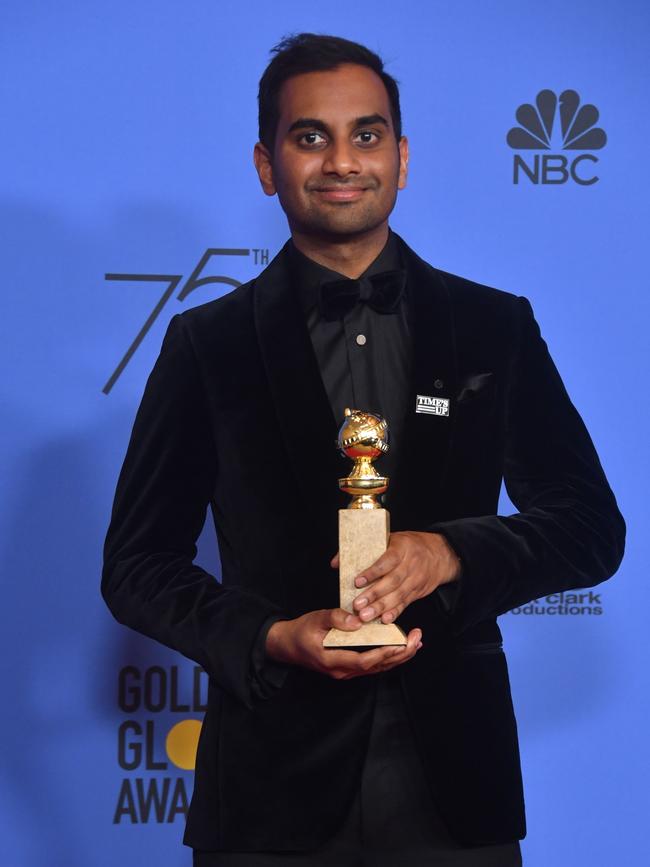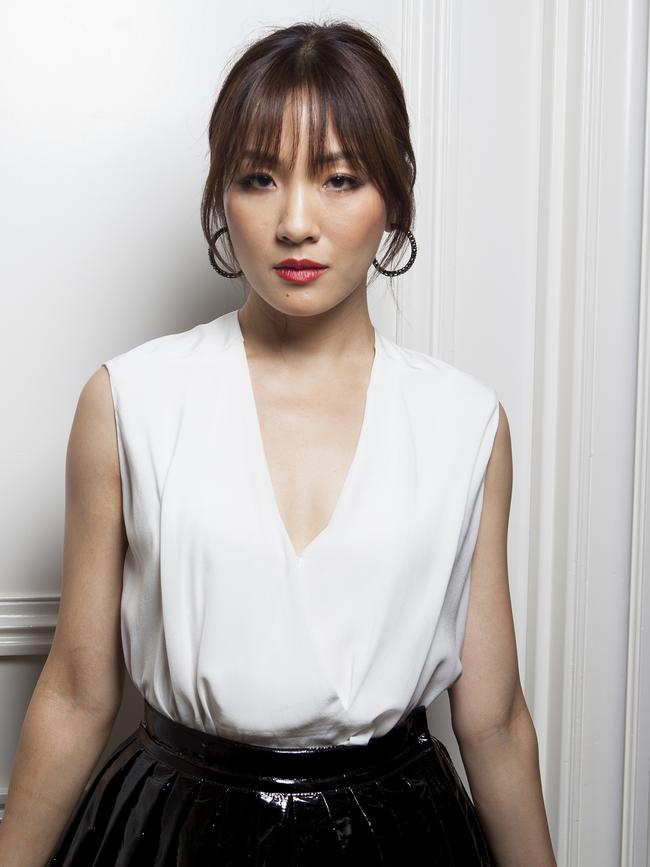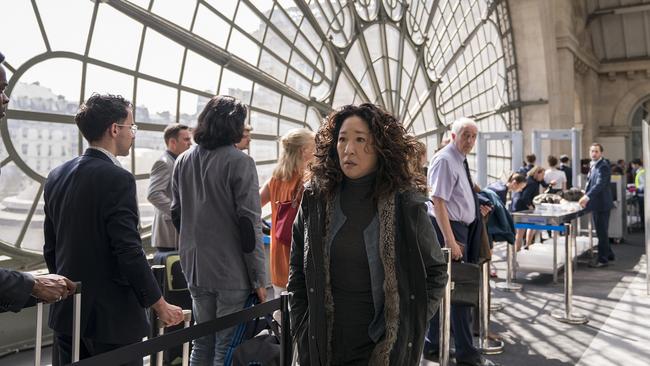After Crazy Rich Asians: Why does Hollywood still have a problem?

Ashton Kutcher as a Bollywood producer, Raj, in a 2012 commercial, his skin darkened, a brown moustache affixed to his face, speaking in a cheap singsong voice, swaying his body, which is clad in a bright blue silk sherwani, back and forth to imitate the Indian head waggle. Tilda Swinton, otherworldly in her beauty, as always, but monkishly bald as the Ancient One, a character originally intended to be Tibetan, in 2016’s Doctor Strange. More subtle, but still just as shocking: Emma Stone — blonde and green-eyed — as Allison Ng, leaning against a kitchen island in a scene from 2015’s Aloha and saying, “my dad was half Chinese, half Hawaiian”, as breezily as if she were saying goodbye to someone on the telephone.
I, too, am half Chinese, though I have always been told (by other Chinese-Americans, by white people who were under the impression I was one of them) that I’m not the right kind of Chinese. I’m over six feet tall and my eyelids have creases, and I have come to anticipate the pause in a conversation with strangers as I watch them — like someone calculating the size of someone else’s apartment — square the fact of my ethnicity with my appearance. I have never quite seen myself on-screen. Maybe in Keanu Reeves or Olivia Munn but, even so, the side of myself that is understood as Asian — that is seen — is as washed away as theirs, and that is because we live in a world that doesn’t make time for ambiguity, that continues to reward whiteness with privilege.
Having been raised on a mediocre diet of American television and mainstream Hollywood movies, I can count on one hand the actors of Asian descent who made an impression on me growing up. Their performances have stayed with me, like a novel you may never read again but pack with you every time you move.
There are two I’ll mention here.

The first was George Takei, a Japanese-American, as the steadfast and level-headed Star Trek officer Hikaru Sulu. He spoke — I remember finding this remarkable and, in a way, I still do, given the show was created in 1966 — without an accent. In a subsequent feature-length film, Sulu eventually becomes captain of his own ship. He showed sound judgment and character in times of danger. He led.
Then there was Sandra Oh, a Korean-Canadian, as the enraged Stephanie in 2004’s Sideways, who has a love affair with a feckless man named Jack, played by Thomas Haden Church. She breaks his nose after learning he is engaged to another woman; I had never seen a Korean woman on-screen lose her temper within the proximity of a Saab convertible and against the backdrop of a California vineyard. Her anger was justified, her emotions real, not cartoonish.
Both performances let me understand that I didn’t have to ask to assume the same privileges as those around me — but nor should I pretend to be someone I wasn’t. They also spoke to a part of me, the Chinese half, that never felt it could behave as carelessly as the other half did.
There have been attempts by Hollywood to insert real people of colour — in this case, Asian-Americans — into the cultural landscape of film and television. Daniel Wu was cast as Lu Ren in 2018’s Tomb Raider, starring Alicia Vikander. He was as good-looking as he was complicated, but where typically there might have been chemistry between two young and beautiful people embarking on a grand adventure, Wu was relegated by the end to the benign, if handsome, friend.

The Hawaii Five-0 reboot has added more nuanced Asian characters missing from the original version, played by actors such as Grace Park, Daniel Dae Kim or Masi Oka, and newer creations, including Silicon Valley, have cast Jimmy O. Yang and Kumail Nanjiani in stereotypical but still more rewardingly complex supporting roles (Yang plays a ruthless if talentless app developer; Nanjiani, as a software engineer, steals the scene in nearly every episode). But these are still small changes, and this so-called progress rings hollow.
You remain unlikely to see Asian-Americans in lead roles in big studios films without the hint of tokenism, even after the box-office success of Crazy Rich Asians, the first studio film with an all-Asian cast since The Joy Luck Club in 1993.
Representation of Asians within American performing arts has always been alarmingly small. A study by the University of Southern California’s Annenberg School for Communication and Journalism showed Asian-Americans representing only 1 per cent of all leading roles in Hollywood (the 2017 US Census Bureau reported there are 18 million Americans of Asian descent, roughly 6 per cent of the population). A study by multiple universities reported that, over a one-year period, of the 242 scripted shows on broadcast, cable and streaming TV, just one-third had a series regular who was Asian-American or Pacific Islander. These are shows, mind you, set in cities such as San Francisco, New York and Los Angeles, which all have significant Asian-American and Pacific Islander populations. And another report by the USC Annenberg Inclusion Initiative stated that of the top 100 films of 2017, 37 didn’t include a single Asian character with a speaking role.

Only one actor of Asian heritage has ever won an Academy Award for best actor: Ben Kingsley, whose father was Indian, in 1983 for playing Gandhi (Kingsley has been nominated in three other instances). Only 12 actors of Asian descent have ever received nominations from the academy — largely for supporting roles, with the exception of Merle Oberon, who was half British and half Sri Lankan, in 1936. The others include Japanese-American Pat Morita; Cambodian Haing S Ngor; Japanese Mako Iwamatsu, Ken Watanabe, Rinko Kikuchi and Sessue Hayakawa; Chinese-American sisters Jennifer and Meg Tilly; Filipino-American Hailee Steinfeld; and British-Indian Dev Patel.
This year Oh made history as the first Asian to win multiple Golden Globes when she was awarded best performance by an actress in a TV series, as Eve Polastri in Killing Eve; she was also the first Asian woman to host the awards. Incidentally, last year Oh also became the first woman of Asian descent to be nominated for an Emmy for the lead in a dramatic series, as Eve Polastri in Killing Eve (she was nominated again this year).
Also last year, the Indian-American actor Aziz Ansari was awarded best actor for a TV comedy by the Golden Globes, the first actor of Asian descent to do so.
And at this year’s Emmys, Kumail Nanjiani was nominated for outstanding guest actor in a drama series, as Samir Wassan in The Twilight Zone.
The New York Times reported that in the search for the male lead in Crazy Rich Asians, one of the movie’s producers was told by several prominent American theatre schools that they hadn’t had a male Asian graduate in years. For her role in that film, Constance Wu would go on to receive a Golden Globe nomination for best performance by an actress in a musical or comedy motion picture.
Things seem to be looking up for Asian actors but they are yet to emulate the success of their peers, namely the poets, writers, directors, photographers, fashion designers, architects, interior decorators and visual artists of Asian descent who have flourished. The creative offerings of Asian-Americans — from Vera Wang’s fantasy wedding dresses, to the fiction of Jhumpa Lahiri, to the haunting cinematography of Hiro Murai, the director of Donald Glover’s television show, Atlanta — aren’t just accepted but celebrated. Only in the representational arts do Asians remain unseen — mostly in film and television, but in music, too, and, to a lesser degree, on the runway.
In other words, it is only when we are hidden that we are allowed to succeed. Which leads to a more troubling but inevitable conclusion: that there is something about the very physiognomy of the Asian face that audiences still cannot or will not accept.
Exotic, opportunistic prostitutes. Sexless, emasculated eunuchs. Submissive young girls. Savage, untamed creatures. Coolies. Filth. The earliest stereotypes about Asian-Americans were formed after the first wave of immigration in the mid-1800s, when Chinese immigrants were brought in by the thousands to help build the railroads that would eventually crisscross the western half of the nation.
They were cheaper than American and European labourers, and they were made to work longer hours. But they were also hired because they were willing (though did they really have a choice?) to do the more dangerous work others refused to do.
Their arrival was called the Yellow Peril. Asian immigrants were seen as invasive and threatening to an entire Western way of life and, over the next century, a series of laws were passed that excluded first the Chinese, but then also those from other Asian countries. By 1924, all Asian immigrants (with the exception of those from the Philippines, a country that had been annexed by the US) were refused citizenship, naturalisation, land ownership and, in some states, prevented from marrying those of another race.
Hollywood capitalised on these fears accordingly in their creations of Fu Manchu and Charlie Chan. The former, a calculating villain who appeared in a series of films beginning in the 1920s (the name, invented by its British creator, is a crude jingoist rhyme, neither Mandarin nor Cantonese), is a mask of a Chinese man, always portrayed with crudely slanted eyes, eyebrows like caterpillars and a thin dangling beard.
The latter was a benevolent but subservient detective in a bowler hat who was popularised by a series of white actors in dozens of films beginning in the 1920s and into the 80s. And even if Asian men weren’t portrayed as the yellow-faced villain or the neutered helpmate, they were still always the other.
It was only in 1965, when immigration laws changed again, and the US eliminated national-origin quotas and introduced a preference system based on family relationships as well as skills, that a new wave of Asian immigrants arrived. With them came a new stereotype, one that persists today: the model minority — competitive, goal-oriented and hardworking (but, notably, lacking in creativity, charm, sex appeal and humour).
In watching movies, we project. It’s a basic impulse. We identify with who we see. We feel what the characters feel, perhaps because once in our life, we experienced something close to what the actor is living on the screen, even if our version was less dramatic, less violent.
After the release last year of Crazy Rich Asians, a romantic comedy about a young woman who discovers her boyfriend’s enormous wealth (and one of only three major Hollywood films ever to have a majority Asian cast), I’ve fantasised about recasting various classic American films with faces that look like mine. What if Ferris Bueller’s projection of youthful freedom and dilettantish attention span — youth is now, and now is free — were something you could see played out among a well-to-do Chinese family? Or if The Graduate was about Mrs Kwan, not Mrs Robinson, a complex woman with whom we could understand the isolation of an empty marriage? Or if The Breakfast Club was about a young Japanese-American woman in the suburbs of San Francisco just discovering the power of her sexuality?
These coming-of-age films — however limited or dated they may seem today — did one specific thing for me when I first watched them: they allowed me to witness the complexity of an individual’s interiority. I saw characters who desired something or someone in life they didn’t have, I saw them stumble and learn from their mistakes and I saw them grow from them. It’s a redemptive, satisfying feeling.
All stereotypes reduce. Asian-American actors have largely been either fulfilments or denials of cliches. If we are never granted the right to a personality, if we are only perceived as heartless automatons just one point away from a perfect SAT score, then we are certainly never going to be granted the opportunity to live full lives on the screen. Robots, after all, are born fully formed.
Perhaps, other Asian-Americans have argued, we aren’t vocal enough. We don’t get worked up, we don’t cause a fuss. Our parents don’t encourage us to take risks, to rebel. We are too polite, too cautious.
But I don’t buy it. I think America refuses to see us. To look at us for who we are. As with so many other minorities in America, audiences are comfortable enjoying the work we make. But representation is about demanding more: more leading Asian-American actors, more films in which we are allowed the everyday banalities of our existence. The anxieties, the boredom, the simple gestures of affection. It’s about showing that you are like us. Not the other way around. Not adjacent. Not other.
In all art, the specific is the universal. Today, society can see itself in films that star black people, gay people, older women and transgender people, because even though those stories are about experiences specific to them, they are also stories about being human. There is no perfect outcome in the battle of representation, at least not today, but their presence on screens is a bestowment of dignity, because it demands society look at them — not past or through them.
THE NEW YORK TIMES



Their faces are familiar for the feelings of horror and shame they produce in me. Mickey Rooney as Mr Yunioshi in 1961’s Breakfast at Tiffany’s, stumbling around his Manhattan apartment in a blue bathrobe, face contorted — lips barely closing over grotesquely pronounced buckteeth, slicked-back hair dyed jet black.